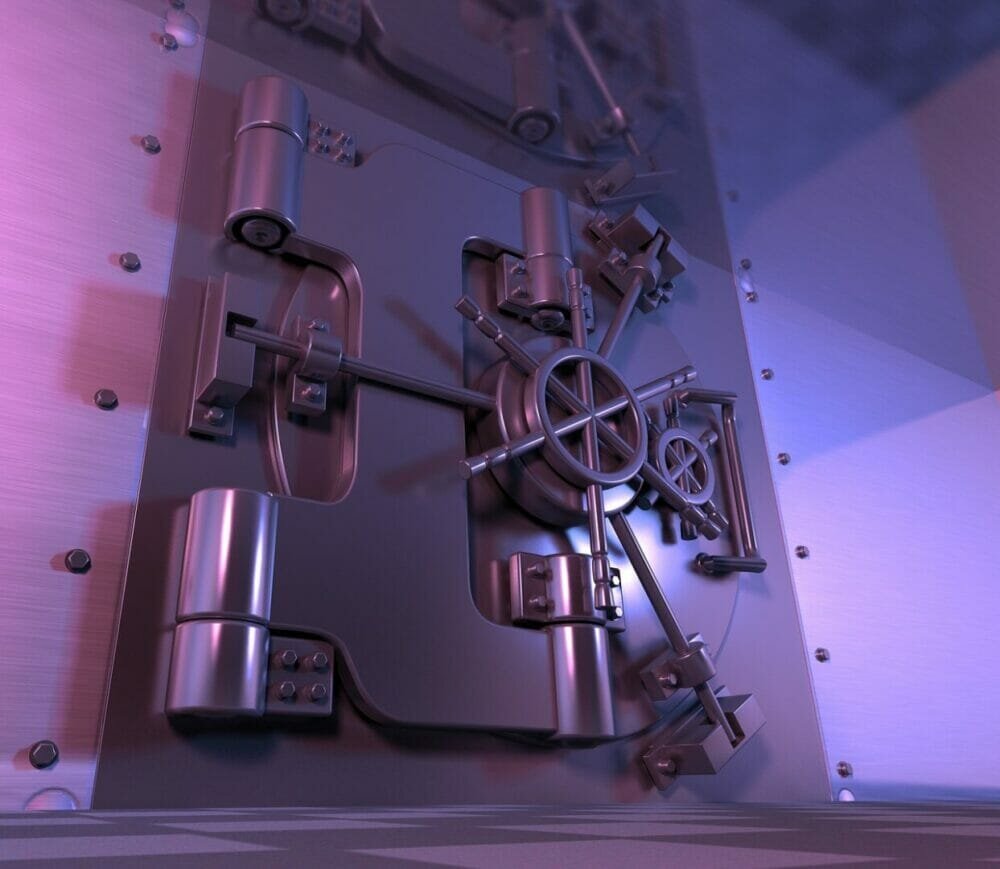Safes are everywhere and are used for all manner of purposes, from small safes designed to house personal possessions -to some of the biggest safes in the world.
Where are these safes located, who owns them and what could they possibly contain? Here, we will explore these and help you crack those questions.
Fort Knox
The famous Fort Knox is also known as the United States Bullion Depository. Located in Kentucky in the United States of America, this colossal vault is operated by the United States Department of the Treasury, and saying it is fairly important is an understatement, with huge amounts of gold bullion behind its extensively-locked doors.
What is in this vault? 5,000 tonnes of gold bullion.
Fancy breaking in? Good luck. Even if you get over the four fences, reinforced steel walls and multitude of locked doors (“it’s like being in Fort Knox, this!”), not one person knows the combination to unlock the final safe, and upon exit you’ll have an entire army to deal with. Not advised.
The Global Seed Vault
We did say that safes can be used for a multitude of reasons, and this one is a bit more leftfield than your standard underfloor safe. Located in Svalbard, the seed vault houses over 500,000 seeds of plant species from around the world.
If the world is destroyed and all of the plants with it, they can all be grown from this huge vault. Sounds like a good idea, if not a bit morbid.
Owned by Norway, the vault is managed in a partnership between the Norwegian Ministry of Agriculture and Food, the Crop Trust and the regional Genebank NordGen.
What is in this vault? Half a million seeds from around the world, with the idea that they can all be regrown in case of Doomsday.
Fancy breaking in? Probably not worth your time, to be honest. It is 620 miles from the North Pole, so its pretty cold up there and you’ll have to pass some pretty angry polar bears. Not to mention, there hasn’t been Armageddon yet, so you could just buy the plants.
Iron Mountain
Now, 95% of the vault owners of Iron Mountain are confidential, but we do know that the biggest tenant is the US Government.
They have various storage facilities but the largest and most well-known is that of Boyers, Pennsylvania. Located in a former limestone mine, there are climate-controlled storage facilities of course protected by armed guards.
With all manner of things held here, it has held some of the most secure possessions in the world since 1954.
What is in this vault? Where do we start? The remains of flight United 93, the wills of Princess Diana and Charles Darwin and collections by Warner Bros and Bill Gates, to name just a few things.
Fancy breaking in? Don’t. If the vault being 200ft underground isn’t enough, the armed guards will probably see fit that you don’t get in. Or don’t get out.
Bank of England Gold Vault
Located in the City of London, the Bank of England is home to one of the most valuable collections of gold in the world. Protecting the gold reserves of the United Kingdom as well as more than 30 countries from across the world is no mean feat, so it is no surprise that the Bank of England have created about as secure vault as it is possible to do.
What is in this vault? Gold. Loads of it. Around 400,000 bars actually.
Fancy breaking in? Unlikely. Not only is the door bombproof, there are also three foot-long keys required to open it as well as an incredibly sophisticated voice recognition system. Not quite like breaking a piggy bank. Move on.
The Mormon Church Vault (Granite Mountain)
Here we have one of the most high-security places in the world. No, not Area 51, but the vault located in Salt Lake City, Utah.
Owned by the Mormon Church, housed here are the world’s largest collection of genealogical records and important church history materials. Lots of these records are in the process of being digitised and are publicly available. Not the originals though, and the previous public tours have been discontinued.
What is in this vault? The largest collection of genealogical records and important church history materials anywhere in the world.
Fancy breaking in? Try all you want, the door can withstand a nuclear blast so I don’t think you’ll have much luck. Oh, there is a highly-skilled security team in place too, obviously.








